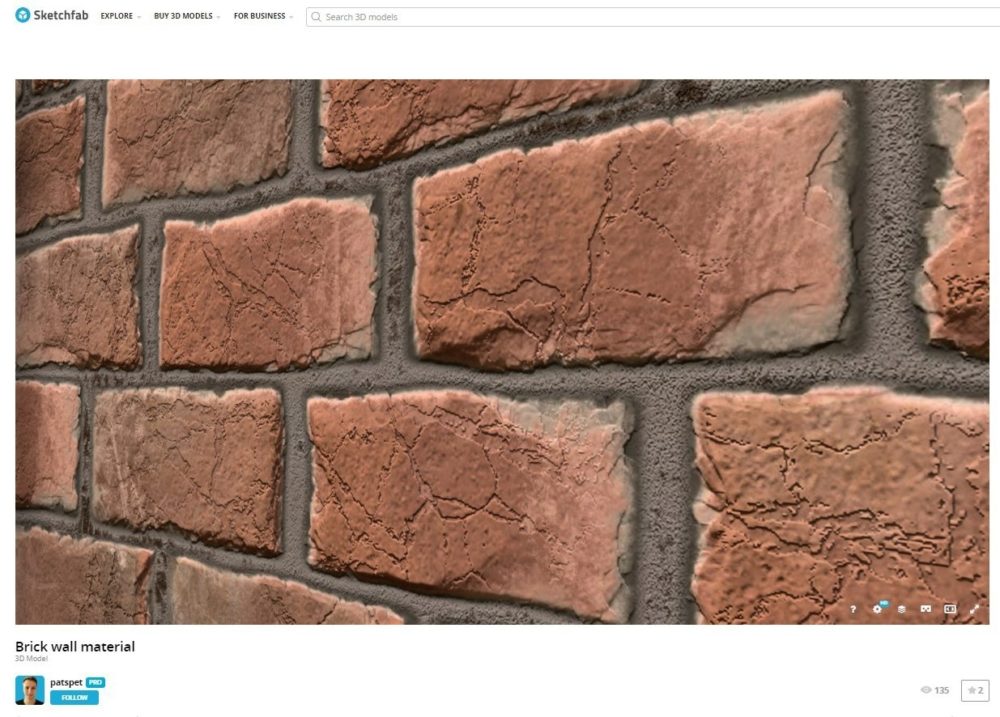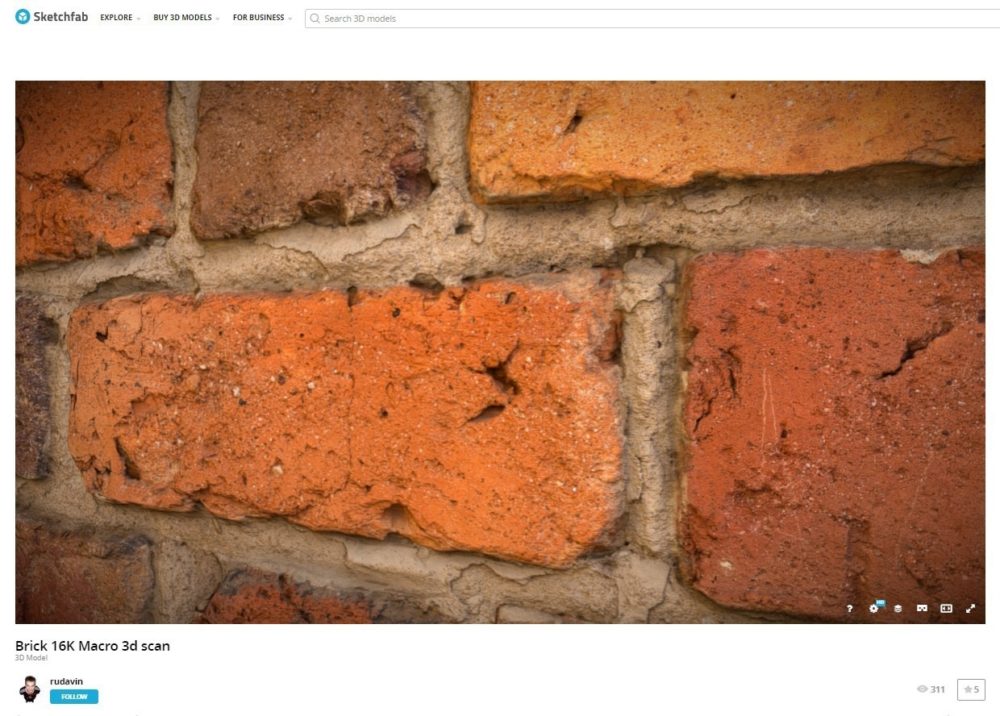On digital materiality
The academic journal published by SCI-Arc in Los Angeles, Issue 17 Art(i)fact - Contribution - 2020
![]()
Misconceptions about the value and labor of digital textures
Seeking well-made digital materials for photorealistic renderings can be a very delicate process. There are many parameters to take into consideration. Digital materiality in this context is the digital version mimicking its physical, tangible materials. Digital materiality is made of digital materials that are themselves made of textures. The value of physical materials is based on their geographical location, their raw presence in nature, the cost of their fabrication, their dimensions and thickness, transportation cost, installation labor price, among other factors. For digital materials though, depending on their use of texturing techniques, the labor and value inherent to them is understood differently than for physical materials. How can we think of digital materiality’s value in relation to its production labor?
Labor of fake texturing in the Bavarian Rococo
Digital materiality is not a direct translation of physical materiality, it operates within a different logic. Digital materiality is most closely comparable to physical fresco texture in that sense. Let us take a surprising detour through Bavarian Rococo frescos to understand this better through a more tangible example. We are looking specifically at the Bavarian Rococo because it was a period in which newly discovered stucco techniques were abundantly used to trick visitors by mimicking materials like marble, both as texture and three-dimensional sculptures. Let us say you have a 19th century library building in the south of Germany, and you want to have its interior walls painted. If you were to ask Bavarian Rococo craftsperson to paint the interior walls – using the same fresco paint quality – in shiny yellowish-orange color to mimic gold materiality or ask them to paint the walls in pastel pink, white, and black to mimic marble material, they would definitely charge you more for the second one. This means that having the interior painted gold is less labor intensive than having it painted as a marble texture. The fresco painting that would be made in marble is more expensive than the golden fresco because it is not a matter of raw material price, transportation, installation time, or weight of materials as it is the case in physical materials, but a question of craftship. It takes better craftship to make believable the intricate marble texture than to produce a reflective gold texture. This logic is applicable to digital materiality. Craftship becomes skills and expertise in the digital realm; gold is also cheaper than marble, and they are both far cheaper than dirt. One needs better technical expertise to make dirt appear realistic digitally.


By the Author, gold and marble pink materials, 2020, Unity Game Engine Screenshot, 487 KB.
Defining Digital Materiality
Materiality is defined as the property of being material, but there is a small nuance to be considered. Material –by being composed of matter– is a tangible artifact. Materiality, on the other hand, is inclusive of tangible and intangible matter. Materiality is a state, so it moves away from artifacts and defined properties. Digital materiality is composed of data in the form of binary digits. It is representation by definition since it is presenting something other. Following this logic, digital materiality is the state of representation of physical materials, whether they are tangible or not. Digital material is the digital representation of a physical material through texturing techniques. Digital materiality’s value is thus directly linked to its digital craftship labor value.
There are two main craftship techniques for making digital textures. The oldest one is procedurally generated, made through manufactured textured only, and results in a simulation of the actual physical material. The second technique –which is more recent– is called PBR, which stands for physically based rendering. This technique is highly realistic and has an extremely accurate light rendering. These PBR materials are at their highest quality when they are made from photo-scanned physical material. How are these two different types of material valued in relation to the craftship labor?
Digital materiality as a simulation of physical materials
There is a technique for making textures from scratch, meaning that the texture is generated completely digitally; it is a simulation of a physical material. A digital material, as we have already established, is made of texture maps. There are numerous types of texture maps, and each of them serves a different purpose. Here though we will only address two main texture maps: the Albedo map (or Diffuse map) and the Normal map (or Bump map). Their names differ depending on the format of the software that is used, meaning if the material is a non-PBR material or a PBR material. These two maps are made from pixel-mimicking the actual material. Let us take brick: if you want to make a brick texture, you would need to draw rectangles aligned in rows and columns with gaps between them. Then, use the colors that you want the brick and the gaps to be depicted in and make a black and white version of this image to use as a Bump map. Numerous parameters can be added and controlled to create variations of that initial texture. This entire process is made using only software.
 Patspet, Brick wall Material, 2020, Screenshot, 558 KB, Sketchfab.com, https://sketchfab.com/3d-models/brick-wall-material-478fa82868b845f390c833b4b27f4f21
Patspet, Brick wall Material, 2020, Screenshot, 558 KB, Sketchfab.com, https://sketchfab.com/3d-models/brick-wall-material-478fa82868b845f390c833b4b27f4f21
This technique is time consuming and the cost of the resulting materials depends on the number of customizable parameters, on the size of the texture image (better quality is more costly), and on the degrees to which it looks like the actual physical material it is mimicking. This effect is achieved through the addition of randomized messy details that break the rigidity and neatness of the digitally produced material. This addition of messiness is crucial to trick us into believing that digital materiality is depicting actual physical material. The messier and dirtier the material looks, the more labor it demands and the more value it will have on the digital market. This is contradictory to the logic of physical materiality. A large, patterned piece of marble would tend to cost more than broken smaller pieces of the same marble in the physical material.
Digital Materiality in actual physical materials
Another technique for producing textures is generated from actual physical materials, meaning that the texture is based on photogrammetry or photographic data. A material, as we have already established, is made of texture maps. Here though, we will only talk about two main texture maps, the Albedo map, and the Normal map.
![]()
Rudavin, Brick 16K Macro 3d scan, 2020, Screenshot, 632 KB, Sketchfab.com, https://sketchfab.com/3d-models/brick-16k-macro-3d-scan-866bf8b2bea640d08be4a2469b5076a7
Photogrammetry is a technique that uses photographs to digitally recompose a three-dimensional space or artifact. These photographs need to be taken from various points of view and different angles. For example, let us go through the process of digitalization of a brick wall through photogrammetry: the photographs will need to be taken from different angles and frontal to the brick wall while aiming at it. These images will then be input into a software designed to recompose them in three-dimensional space. The software starts by aligning these images in three-dimensional digital space. It attempts to recreate the exact position of where each picture was captured in relation to the others. This process works by finding enough points in two pictures that are similar enough to be understood as the same – which means that these two pictures were taken from the same part of the same brick. The algorithm is quite adept at distinctly grouping points, depending on their direct adjacencies. Once that process of alignment is done, it recomposes the other neighboring points generating a point cloud. A point cloud is an aggregation of points that are identified by their coordinates in digital space and their color index. Each point has an X, Y, and Z value and a color value. The point is insignificant; it is only through the aggregation that it become legible to our eyes. Then this dense point cloud is translated into a mesh with a texture. The natural conditions of light, air, and material have an impact, as much as the algorithms finding similar points to align the images. The resulting mesh is one of the infinite results from the same process of three-dimensional scanning of the same brick wall. Many variables are in play, from the number of pictures taken to the degree of fidelity chosen at each step of the process. They both depend on human labor: how much time it takes to capture the pictures and computational labor; how much computing power and time are you allocating to each digital step. Digital materiality is the result of that translation through human labor and the labor of computational systems. PBR textures are photorealistic in their process, so they do not need the additional step of adding messiness to them digitally; they have better light, and are ready from the start. They need to be edited to fit seamlessly next to one another to be able to cover any geometry.
This technique is also time consuming and requires the right weather conditions to create the exact texture. It also involves additional digital processes. These PBR materials have then more value than the digitally simulated materiality because they are more realistic. They are also heavier to produce, meaning they require stronger computational power.
Speculation on the value of Digital Materiality
Three-dimensional texture creation is a whole field dedicated to digital materiality. With the rise of our use of digital software and gaming engines, this field becomes central to our production, so the technical approach to creating these digital materials ought to become important in our architectural thinking. As architects move closer to designing photorealistic immersive spaces, we become more interested in the use of digital materials to mimic specific environments and communicate well-curated atmospheres. Digital materiality is central to the narratives of our spaces. Its value is linked to the cost of its physical production, but we must also take into account the preliminary cost of the process (camera, software, hardware, cloud space). As digital materials become more crucial in architecture, more designers will be using increased computational power to make them. This process relies, in part, on blockchain technology, which itself powers cryptocurrency. Therefore, this digital material has a direct and real impact on the stock market.
As we have seen over the last few years, the value of digital assets is rising; the same will happen to our digital materials, to the point where digital marble will become more valuable than physical marble.
Author of https://offramp.sciarc.edu/articles/on-digital-materiality
